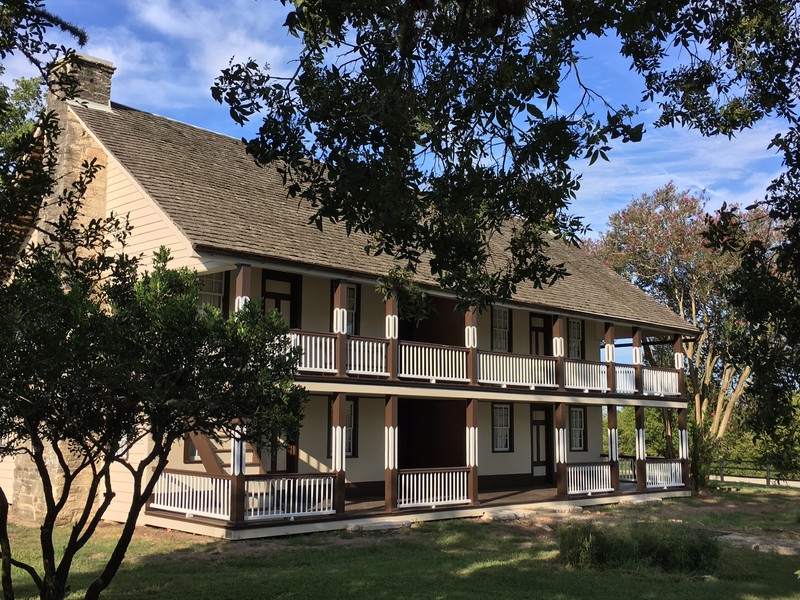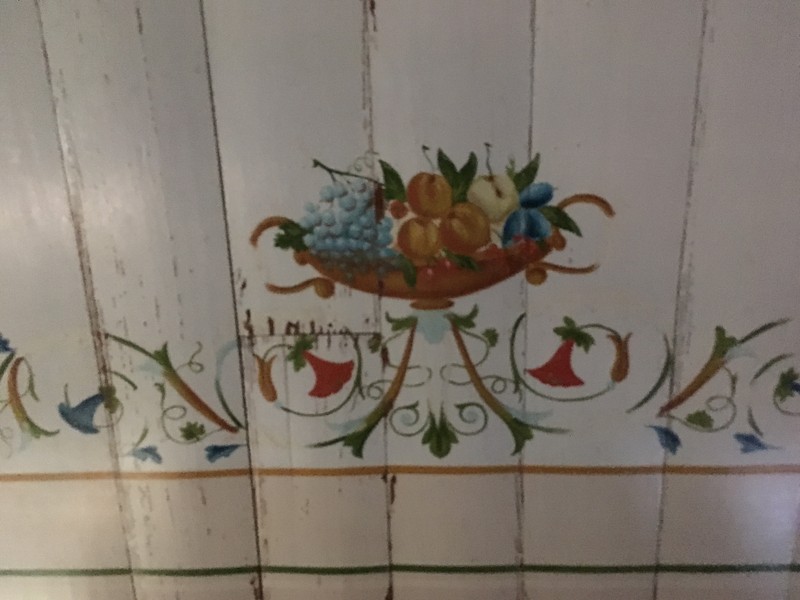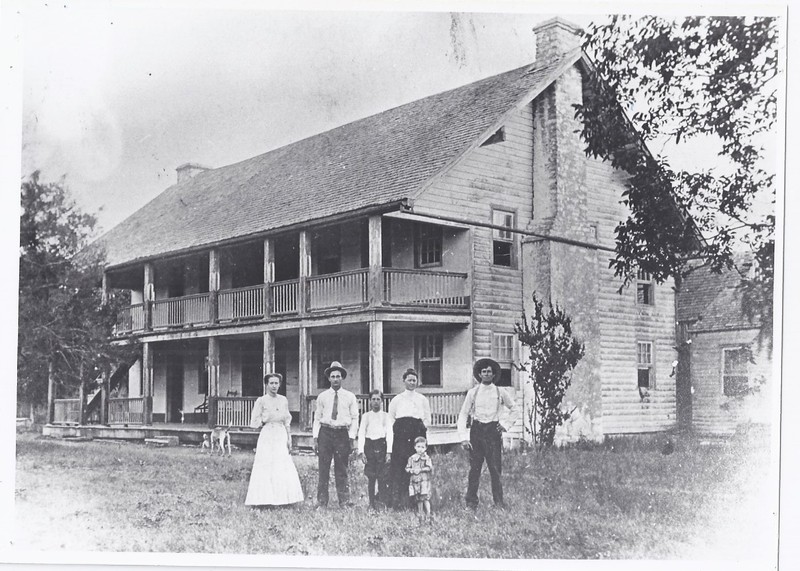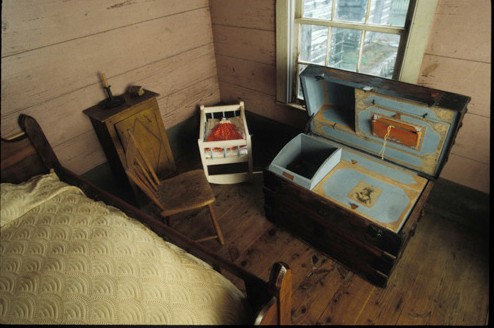Lewis-Wagner House
Introduction
Text-to-speech Audio
Images
Lewis-Wagner House

Decorative painting by Rudolph Melchoir

The Wagner family circa 1910

Interior of Lewis-Wagner House

Backstory and Context
Text-to-speech Audio
William Townsend was an early settler who received a Mexican land grant in the Austin Colony in 1831 at the present sit of Winedale. Following his marriage in 1834, Townsend built a large room with a fireplace and a sleeping loft. This structure was built entirely by hand.
Samuel K. Lewis purchased the Townsend property in 1848 and developed it into a large cotton plantation worked by 13 enslaved people. Lewis expanded the original structure, which is located in the left section of the house, turning the loft into a full second story and adding an identical section to the right with a breezeway between the two sections. Across the front, he added the first- and second-story porches with cedar pillars. Lewis’s house and the nearby Transverse Crib Barn are the only buildings today that occupy their original sites.
In the mid-1850s, Lewis lobbied for a public road to pass in front of the house, which served as a stagecoach stopping place between the two towns of Brenham and La Grange. The Winedale community relocated to cluster around this stop. Lewis died in 1867, but his heirs retained the house until 1882, when it was purchased by Joseph G. Wagner, a cobbler from Breslau, Silesia (modern day Wroctaw, Poland).
Through the first half of the twentieth century, the Wagners farmed their land alongside several Black tenant families and ran a number of local businesses, including a cotton gin, feed and grist mills, tin shop, Blacksmith shop, a general store, and a saloon that became a favorite Winedale gathering place. Today, the Lee Wagner House, the store, and the gas station, seen across the highway from the Lewis-Wagner House, are used ass workshops and storage facilities.
By the late 1950s, local agriculture and the businesses that served it had waned. The Wagner family sold the property in 1961 to preservationist Hazel Ledbetter, who showed it to her friend Ima Hogg. Captivated by the decorative paintings of Rudolph Melchoir on the interior, Miss Ima decided to buy the house with the initial thought of relocating it to Bayou Bend, her home and future site of the decorative arts gallery of the Museum of Fine Arts, Houston. When that proved impossible, she set out to restore the house as a showplace for the nineteenth-century Texas handcrafted furniture and crafts she had been collecting. Ongoing preservation of the Lewis-Wagner House is supported in part by the Alfred Jr. and Rub D. Wagner Endowment.
The Lewis-Wagner House exhibits German architectural features with the window details and woodwork. The columns on the side of the house were painted to give the effect that they had been beveled. Visitors can see the internal structure of the porch by looking up at the ceiling by the right column of the front porch. The Lewis-Wagner House features a dogtrot: a breezeway between the two sides of the house that provides shad and can be closed off with doors. Dogtrot houses were common in Texas during the middle of the nineteenth century.
Sources
Briscoe Center for American History, The University of Texas at Austin
Briscoe Center for American History, The University of Texas at Austin
Briscoe Center for American History, The University of Texas at Austin
Briscoe Center for American History, The University of Texas at Austin
Briscoe Center for American History, The University of Texas at Austin
